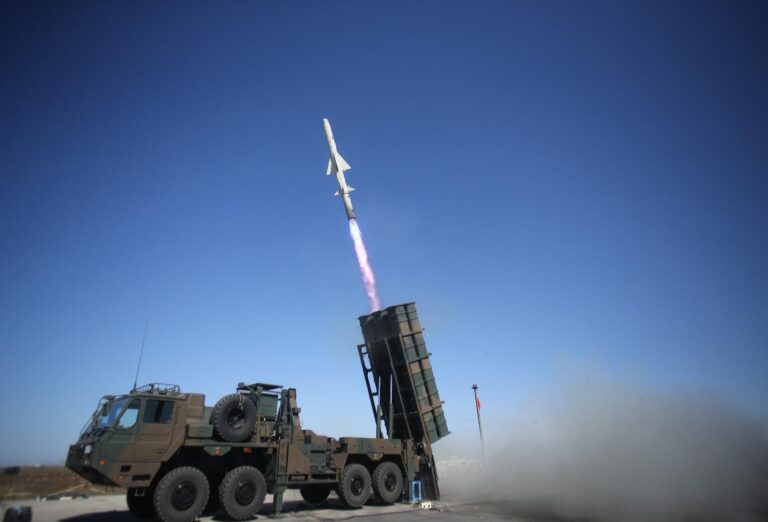Japan has officially unveiled its latest military advancement, the Type 12 surface-to-ship missile, during the recent Fuji Firepower Exercise. Marking a significant step in the country’s defense capabilities, the introduction of this advanced missile system underscores Japan’s commitment to strengthening its maritime security amid growing regional tensions. The Type 12 missile, designed to enhance precision strike capabilities against naval targets, was demonstrated in a live-fire drill held at the foothills of Mount Fuji, drawing attention from defense experts and international observers alike.
Japan Introduces Advanced Type 12 Surface-to-Ship Missile Enhancing Maritime Defense Capabilities
Japan’s latest advancement in maritime security was on full display during the recent Fuji Firepower Exercise, where the Type 12 Surface-to-Ship Missile was unveiled to domestic and international observers alike. Designed to strengthen Japan’s coastal defense, this missile system boasts enhanced targeting precision and improved resistance to electronic countermeasures, making it a formidable asset against modern naval threats. Its integration into the Japan Self-Defense Forces marks a significant step toward bolstering deterrence capabilities in the increasingly contested waters of the Asia-Pacific region.
Key features of the Type 12 missile include:
- Extended Range: Capable of striking targets beyond 200 kilometers
- Advanced Guidance: Incorporates inertial navigation with terminal infrared homing
- Mobility: Launchers mounted on high-mobility vehicles for rapid deployment
- Countermeasure Resistance: Equipped with electronic jamming counter-countermeasures
| Specification | Details |
|---|---|
| Range | 200+ km |
| Warhead Type | High-explosive, armor-piercing |
| Launch Platform | Mobile wheeled launcher |
| Guidance System | Inertial + Infrared Homing |
Strategic Implications of the Type 12 Missile Showcase at Fuji Firepower Exercise
The deployment of the Type 12 surface-to-ship missile at the Fuji Firepower Exercise signals Japan’s commitment to strengthening its maritime defense capabilities amid rising regional tensions. This platform enhances the Japan Ground Self-Defense Force’s ability to engage hostile vessels at greater distances with precision, underscoring a shift towards layered, long-range deterrence strategies. It also reflects Tokyo’s strategic emphasis on protecting vital sea lanes and reinforcing joint operational readiness with allied forces. Notably, the missile’s mobility and rapid deployment capacities provide a flexible response option against emerging naval threats in the Indo-Pacific theater.
From a broader perspective, the introduction of the Type 12 missile boosts Japan’s deterrent posture while complicating adversaries’ strategic calculations. Key implications include:
- Enhanced Coastal Defense: Enables rapid, shore-based counterattacks against hostile ships approaching Japanese territorial waters.
- Force Multiplication: Supports integration with existing air and naval assets for comprehensive multi-domain engagements.
- Regional Security Dynamics: Raises the stakes for maritime dispute confrontations, potentially influencing neighboring states’ military planning.
- Technological Edge: Showcases Japan’s advancing missile guidance systems and adaptability to evolving threat environments.
Recommendations for Regional Security Stakeholders in Response to Japan’s Missile Deployment
Regional stakeholders must enhance diplomatic channels to address the implications of Japan’s recent deployment of the Type 12 surface-to-ship missile. Establishing open lines of communication will mitigate misunderstandings and prevent potential escalations. Forums such as ASEAN-led security talks and the East Asia Summit should prioritize discussions on missile defense transparency and risk reduction measures.
Meanwhile, defense policymakers across the region should consider the following strategic actions:
- Expand intelligence-sharing agreements to better track missile movements and developments.
- Invest in joint training exercises focused on maritime defense readiness and crisis management.
- Explore arms control initiatives that include emerging technologies like hypersonic and surface-to-ship missile systems.
- Strengthen regional early warning networks to facilitate timely responses to potential threats.
| Stakeholder | Recommended Action | Expected Outcome |
|---|---|---|
| Japan | Increase transparency on missile capabilities | Build trust among neighbors |
| South Korea | Enhance naval joint exercises with allies | Boost regional maritime security |
| China | Engage in It appears the table entry for China is incomplete. Based on the context, here’s a suggested completion for China’s recommended action and expected outcome, aligned with the diplomatic and defense themes in your text:
| Stakeholder | Recommended Action | Expected Outcome | Would you like me to help complete the entire table or expand on any other sections? Concluding RemarksAs Japan continues to advance its defense capabilities amid rising regional tensions, the unveiling of the Type 12 surface-to-ship missile at the Fuji Firepower Exercise marks a significant milestone. This latest development underscores Tokyo’s commitment to strengthening its maritime security and deterrence posture. Observers will be closely watching how the integration of the Type 12 missile system influences the strategic balance in the Indo-Pacific region in the months ahead. |




